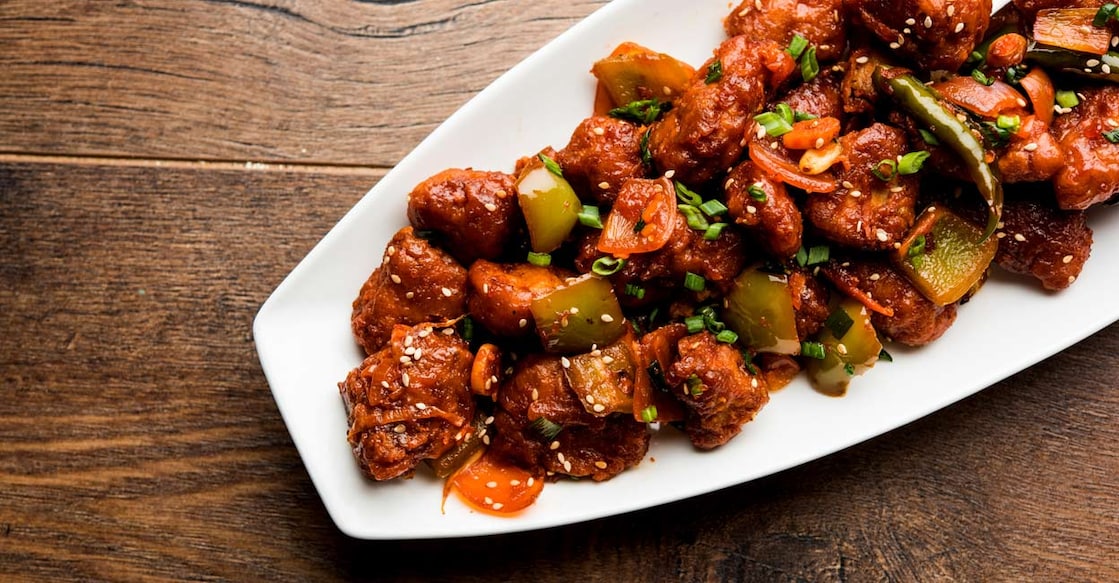Is your restaurant chilli chicken hiding artificial colours? Here's how to spot and avoid them

Mail This Article
Chilli chicken is a favourite on many Indian-Chinese menus. With its glossy red colour and spicy, savoury flavour, it’s a dish that’s as eye-catching as it is tasty. But have you ever wondered where that bright red hue comes from?
In many restaurants, especially lower-cost eateries and street food stalls, the colour doesn't come from chilli powder or paprika—it often comes from artificial food colours like Carmoisine (INS 122) and Sunset Yellow (INS 110). And that’s something worth paying attention to.
What colours are used in chilli chicken?
While chilli powder and Kashmiri chillies can add a natural red tint, many establishments add synthetic food dyes to make dishes appear more appealing.
The most common synthetic colours used are:
- Carmoisine (INS 122): A deep red synthetic azo dye.
- Sunset Yellow FCF (INS 110): Adds a yellow-orange tone and is often combined with Carmoisine for a brighter red.
These colours are permitted under FSSAI regulations, but only within specific limits. However, overuse is common, and some regions have taken action. In 2024, Karnataka banned the use of artificial food colours in chicken kebabs and vegetarian dishes after tests revealed excessive levels of harmful dyes.
Why should you be concerned?
While approved food colours are considered safe in small amounts, excessive or long-term consumption may have side effects. Studies and consumer reports have linked synthetic colours like Carmoisine to:
- Hyperactivity and attention issues in children
- Allergic reactions in sensitive individuals
- Possible long-term health risks when consumed regularly
Some countries have banned or severely restricted these dyes, especially in children's foods. In India, they’re still allowed—but that doesn’t mean they’re always used responsibly.
How to spot artificial colouring in your chilli chicken
- Unnaturally bright red colour: If the dish looks almost fluorescent or unnaturally glossy, it likely contains synthetic dyes.
- Red oil separation: You might see a layer of bright red oil in the dish or on your plate—a sign of added colour.
- Stained fingers or tongue: If your hands or mouth are stained after eating, artificial colouring is probably present.
- Consistent colour in every piece: Natural ingredients often lead to some variation in colour, while dyes make the dish look uniform.
How to avoid it
Ask the restaurant: Don’t hesitate to ask your server or the chef if artificial colours are used. Many newer or health-conscious places proudly avoid them.
Choose reputable restaurants: Higher-end or transparent food outlets are more likely to use natural alternatives like Kashmiri chilli, paprika, or beetroot extract.
Cook at home: Homemade chilli chicken can be delicious without any artificial colours. You can get a deep red colour using natural ingredients like:
- Kashmiri red chilli powder
- Paprika
- Beetroot juice or powder
- Tomato paste
Stay aware, stay healthy
That red sheen on your chilli chicken might look tempting, but it’s worth thinking twice about what’s behind it. Artificial colours like Carmoisine are allowed within limits, but many eateries don’t always follow the rules. As a food lover, being informed helps you make better choices—whether you're eating out or cooking at home.
For delicious, naturally coloured recipes and healthier alternatives, explore our home-cooked Indo-Chinese favourites here.

